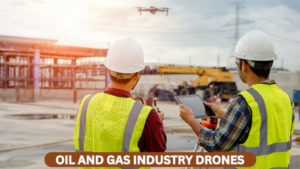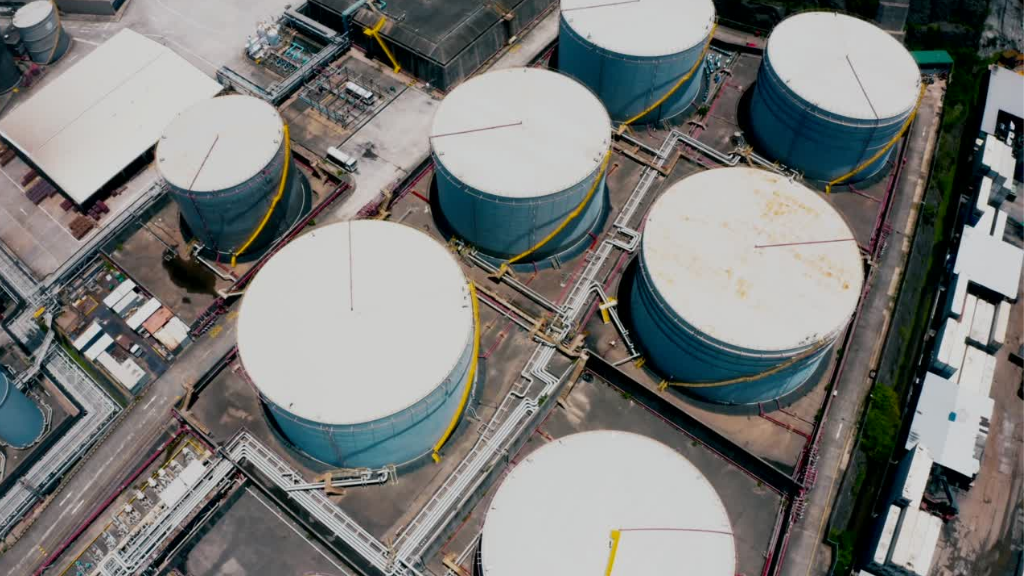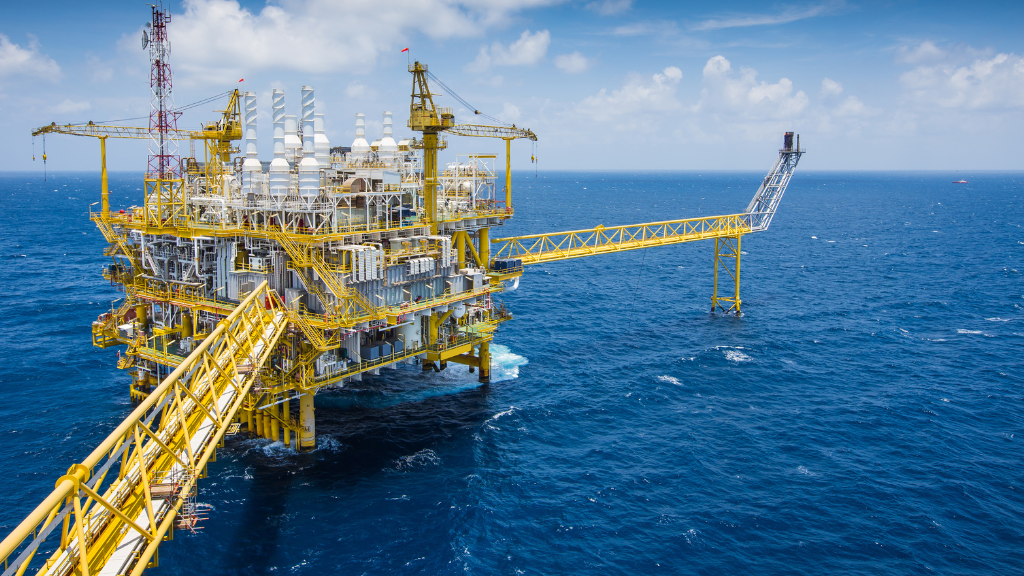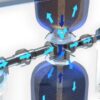OIL AND GAS INDUSTRY DRONES
The oil and gas sector, traditionally conservative in embracing new technologies, is witnessing a transformative leap with the integration of drones or Unmanned Aerial Vehicles (UAVs). These aerial devices are unlocking new horizons, optimizing operations, reducing costs, and enhancing safety protocols within the industry.
Benefits of Drones in the Oil and Gas Industry
Drones are revolutionizing the oil and gas sector by offering quick and efficient inspection solutions, significantly enhancing safety standards. They eliminate the need for manual inspections, which are often hazardous and time-consuming. Commercial drones, armed with high-resolution cameras, thermal sensors, and methane detectors, allow companies to identify potential hazards and structural issues in pipelines, offshore rigs, and other facilities from a safe distance, ensuring real-time and accurate data collection.
The real-time data collected by drones, equipped with finely tuned sensors and cameras, provides invaluable insights into the health and performance of assets. This data is pivotal for optimizing production processes, detecting leaks, monitoring corrosion, and planning maintenance schedules, enabling companies to make informed and timely decisions, improving overall efficiencies.
Moreover, the adaptability of drone technology allows for seamless integration into existing workflows. Drones can be programmed to perform specific inspection routes autonomously, transmitting data to cloud-based platforms accessible by decision-makers at any time, enhancing intelligence gathering and decision-making processes.
Applications of Drones in the Oil and Gas Industry
1. Leak Detection and Monitoring:
Drones, fortified with advanced infrared cameras and finely tuned sensors, are pivotal in detecting and monitoring leaks. They can identify and quantify methane and other invisible natural gas leaks with precision, allowing companies to act promptly. This early detection is crucial in averting expensive spill clean-ups and in minimizing the environmental impact through reduced emissions.
2. Corrosion Inspection and Prevention:
Corrosion can significantly impact the longevity and functionality of pipelines and other assets in the oil and gas industry, leading to substantial financial losses. Drones, equipped with state-of-the-art sensors and high-resolution cameras, can swiftly pinpoint areas of corrosion. This rapid identification enables companies to undertake preventive measures, mitigating the risk of extensive damage and potential operational hazards.
3. Thermal Imaging for Asset Monitoring:
Drones fitted with thermal cameras serve as an invaluable asset in monitoring equipment health. They can detect subtle temperature variations in machinery, highlighting potential operational and structural anomalies that might otherwise go unnoticed. Real-time monitoring facilitated by drones allows for the optimization of maintenance schedules, minimizing operational disruptions and enhancing overall asset performance.
4. Offshore Exploration and Drilling Surveys:
Drones are instrumental in conducting aerial surveys of potential offshore drilling sites. They can map underwater terrains and identify potential risks, providing invaluable data before the commencement of drilling operations. The real-time data provided by drones during offshore drilling operations ensures compliance with safety and environmental regulations and monitors oil and gas flows accurately.
5. Pipeline and Storage Tank Inspection:
Drones can efficiently inspect pipelines and storage tanks from above, identifying potential issues and detecting leaks, thereby optimizing human resources. They can cover predefined inspection routes autonomously, documenting any damage and identifying areas of corrosion, erosion, and other structural integrity concerns.
6. Emergency Response and Spill Management:
In emergency situations like natural disasters or oil spills, drones can offer critical support to response teams by accessing hard-to-reach areas, monitoring the spread of oil, and providing real-time data and communication between teams on the ground. This immediate aerial insight is crucial for coordinating effective response strategies and mitigating environmental damage.
7. Enhanced Data Collection and Analysis:
Drones can collect comprehensive real-time data on oil and gas operations, offering insights into asset health and performance. This data, when analyzed, can aid in optimizing production processes, detecting anomalies, and planning maintenance schedules, enabling informed decision-making and improved operational efficiencies.
8. Integration with Existing Workflows:
The versatility of drone technology allows for seamless integration into existing operational workflows, enabling quick and efficient data access. The autonomous nature of drones and their ability to transmit data to cloud-based platforms make them a valuable asset in gathering intelligence and improving decision-making processes in the oil and gas sector.
By leveraging the multifaceted applications of drones, companies in the oil and gas sector can significantly enhance operational safety, efficiency, and data accuracy, paving the way for innovative solutions and optimized operations in this ever-evolving industry landscape.
Challenges in Deploying Drones
Despite the numerous benefits, deploying drones in the oil and gas industry is not without its challenges. Regulatory compliance and safety concerns are significant hurdles. Companies must navigate a myriad of national and international regulations concerning drone usage, such as registration, flight restrictions, and operator certifications. Additionally, there are safety concerns related to drones entering restricted airspace, potential collisions with other aircraft, and human error impacting operations.
Commercial drones also have limited flight time, typically ranging from 20-30 minutes, impacting their effectiveness in large areas and larger operations. The range of drones can also be limited, meaning they can only operate in a specific area, limiting the extent to which they can replace manual inspection and monitoring activities.
The operation and analysis of drones require specific skills and expertise. Companies need trained drone pilots who can operate the vehicles safely, follow flight plans, and analyze the collected data. They also need data scientists who can analyze the information and provide actionable insights.
Future Trends in Drone Use
The development of advanced sensors will enable drones to carry out more complex operations such as gas detection, leak identification, corrosion control, and more. Advancements in autonomous flight will improve the functionality of drones, giving them the capability to carry out non-linear or repetitive tasks and eliminating the need for a drone pilot to be on-site.
The incorporation of artificial intelligence and data analytics will make data collection and analysis quicker, more accurate, and more comprehensive. By analyzing the drone data collected in real-time and developing models and algorithms to predict the future performance of oil and gas operations, companies can optimize their operations and reduce costs.
Collaboration between drone manufacturers and oil and gas companies will be crucial as drone technology becomes more advanced. Such collaborations will help identify innovative solutions to operational challenges, improve data quality, and enhance operational efficiency.
Opportunity for Drone Services in Oil and Gas
The oil and gas industry is at the forefront of the global drone market, with drone deployment significantly transforming the industry, especially for operations in difficult-to-reach areas such as offshore rigs and pipelines. The increasing use of drone services in the oil and gas industry is indicative of the digital transformation happening in the energy industry, and this trend is expected to continue in the coming years.
How Much Does It Cost to Integrate Drone Technology in the Oil and Gas Sector?
Integrating drone technology into your operations is an investment in enhancing safety, efficiency, and data accuracy. At Austin Visuals, we offer tailored drone technology solutions to meet the unique needs of each client in the oil and gas sector.
For a comprehensive drone inspection and monitoring service, clients can expect to invest approximately between $2,000 to $10,000 per day, depending on the complexity, duration, and specific requirements of the project. This investment includes high-resolution aerial imaging, real-time data collection, and detailed analysis reports, enabling companies to make informed decisions promptly.
For more intricate projects requiring advanced sensors, thermal imaging, and detailed analytical insights, the investment can range between $10,000 to $25,000 per day. This service is particularly beneficial for offshore exploration and drilling, leak detection, and emergency response situations, where detailed, accurate, and real-time data is crucial.
We understand that each project is unique, and we are committed to providing transparent, competitive, and value-driven pricing. We encourage prospective clients to get in touch with us to discuss their specific needs and receive a customized quote.
Conclusion
Drones are playing a pivotal role in transforming the oil and gas industry by improving safety, reducing costs, and optimizing operations. The adoption of drone technology will become increasingly common throughout the oil and gas industry as companies discover the advantages of using drones. These advantages will increase alongside the advancements in drone technology, such as improved sensor capabilities, autonomous flight functionality, and data analysis and prediction.
Austin Visuals 3D Animation Studio is at the cutting edge of providing drone technology solutions specifically tailored for the oil and gas industry. We invite you to explore our innovative solutions for your drone needs and to get in touch to learn more about how we can assist you in leveraging drone technology to optimize your operations.
Austin Visuals prides itself on its proficiency and experience in delivering top-notch drone technology solutions for the oil and gas sector, ensuring that companies can leverage the full potential of drones to enhance their operational efficiency and safety.
For inquiries or questions Call Us, (512) 591-8024, Email us: [email protected], or use the form below to send us a message. We’re ready to answer any questions you have so that we can deliver your creative project on time and to the highest standard possible.
Have A Project You Want To Discuss? Drop us a line!







